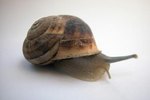
Of all the pinnipeds, walruses are the only ones with tusks. A walrus' tusks are his only truly functional teeth, used for a variety of purposes essential to his survival in the wilds of the Arctic Circle. Contrary to popular belief, a walrus does not engage his tusks in food foraging, but rather uses his upper lip and sensitive vibrissae whiskers.
Really Big Buck Teeth
Perhaps the most distinguishing feature of the walrus is his tusks. Actually largely elongated canine teeth, the tusks can grow up to 40 inches long and weigh up to 12 pounds each. Present on both males and females, males tend to have larger tusks, and the Pacific walrus has larger tusks than the Atlantic walrus. The walrus has many uses for his tusks, primarily for defending his territory and his harem during mating season. He also uses them as a makeshift ice pick to dig breathing holes through the ice from beneath the surface, and to haul his rather sizable body onto land or ice masses. Use of the tusks by the walrus to haul himself out of the water has led to the nickname "tooth walker," since he appears to be walking on his teeth. His scientific name translates from Latin into "tooth walking sea horse."
Eschew the Chew
In addition to his tusks, the walrus does have other rudimentary teeth. While the number of teeth can vary, with a maximum of 32 teeth, most walruses have 18 teeth located behind the canines. These smaller teeth, oval-shaped and flat-topped, growing to about 2 inches in length, aren't used for feeding or chewing. The walrus will forage for clams, snails, mussels, worms, squid, octopus and even some fish. When he finds his food source, he sucks it through his mouth and swallows it whole. His mouth suction is so powerful it can remove clams and mussels from their shells, even turning them inside-out at times. If the teeth are used at all, they might assist with cracking a clam or mussel shell from time to time.
A Unique Dental Composition
Teeth of typical mammals are comprised of three different tissues. Enamel forms the tough exterior of the tooth, and doesn't lend itself to carving or whittling. Cementum is similar to bone, usually forming a protective cap over tooth roots. The presence of cementum in mammalian teeth varies greatly among different species. Finally, dentine is a softer structure normally covered by enamel. Dentine makes up the majority of the walrus tooth, surrounding a large pulp cavity in the center of the tooth. Cementum may form around the outside of the tooth structure, but it can erode over time. Smooth, exposed dentine in walrus tusks makes them particularly suitable for carving, which led largely to overhunting.
Environmental Indicators
Marine biologists discovered that walrus teeth will retain many environmental toxins, making study of walrus teeth an important part of tracking both the health and travel habits of the species. Lower canine teeth generally are extracted and assessed, allowing scientists to determine with a fair amount of accuracy the locations specific herds of walruses tend to populate both during breeding and nonbreeding seasons.
References
Photo Credits
-
Jupiterimages/Photos.com/Getty Images




